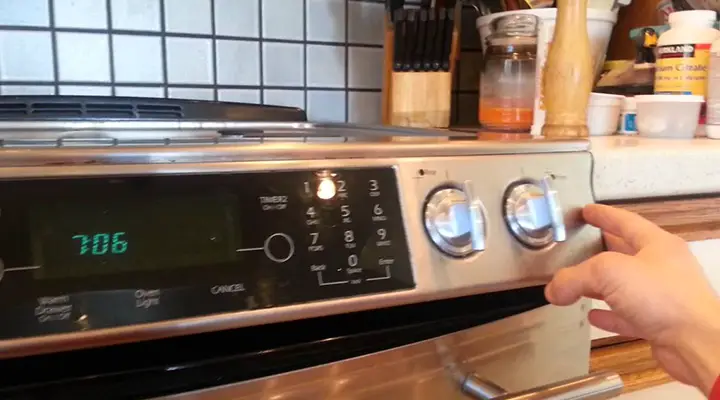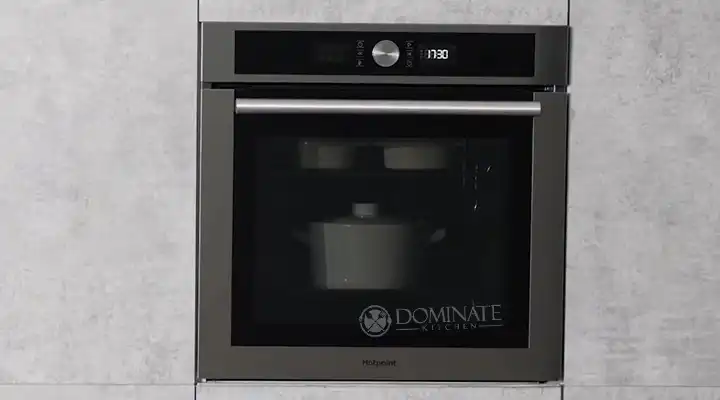Whirlpool Oven Takes Forever To Preheat | 8 Reasons and Solutions
In the world of cooking, your trusty oven can be your best friend or your worst enemy. Imagine, you’re hungry, you’ve got a crowd to feed, or a delicious dish to bake, and then bam! Your Whirlpool oven takes an eternity to preheat. It’s a frustrating situation that has irritated countless home cooks, leaving them impatiently waiting.
But why does a Whirlpool oven take forever to preheat? Turns out the problem behind it can be a few. Old age, bad connection or wattage, wrong temperature settings, and gunked-up heating elements, are just a few.
Today we are going to talk all about them and also provide the solution for each situation. So stay tuned.
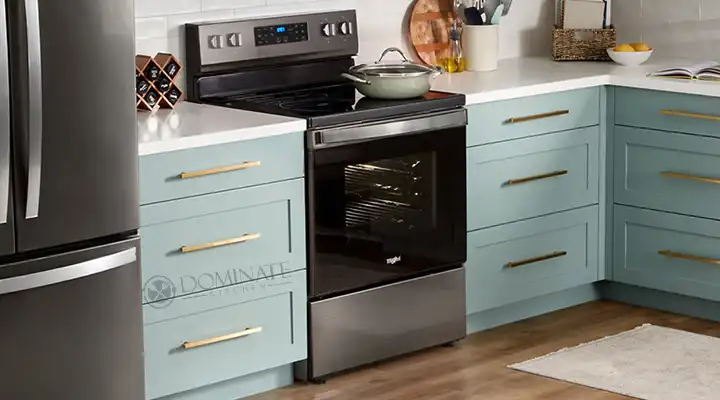
Reason Whirlpool Oven Is Taking Forever To Preheat | Explanation And Solution
If your oven is not preheating, you already are in a pickle. So without keeping you waiting, here is the list of reasons your Whirlpool oven is not preheating properly.
Reason 1: Age and Condition
If your oven has seen its fair share of years, it could be showing signs of wear and tear, especially in the heating elements and temperature sensors department. This wear and tear can slow down the preheating process. On the other hand, if you’ve got a newer model, this is less likely to be the issue.
Solution: The best thing to do with an old oven is to change the heating element and sensors.
Reason 2: Temperature Setting
It’s always a good idea to double-check that you’ve set your oven to the right temperature. It happens to the best of us – sometimes we accidentally set it lower than we intended, and that’s a recipe for longer preheating times.
Solution: If you’ve accidentally set it too low, just adjust it to the right temperature for faster preheating.
Reason 3: Calibration is Off
Over time, your oven’s temperature calibration can start drifting off course. You can play detective with an oven thermometer to see if the actual temperature inside matches what you’ve set. If there’s a noticeable difference, it might be time to either recalibrate the oven or bring in the professionals for a check-up.
Solution: Use an oven thermometer to compare the set temperature with the actual temperature. If they’re out of sync, follow your oven’s manual to recalibrate or call in a pro.
Reason 4: Insulation and Seals are Damaged
Imagine your oven as a fortress of heat, and its doors are the gates. If those doors (or more specifically, the gaskets) are damaged or the insulation isn’t up to par, you’ll have a heat escape problem. This makes it tough for your oven to reach and maintain the right temperature. Check for any gaps in the door seal and replace it if needed.
Solution: Replacing the oven door gaskets will help you with this. Make sure you get the right size.
Reason 5: Dirty or Faulty Heating Elements
If your heating elements are looking a bit grubby or they’re not pulling their weight anymore, it’s definitely going to slow down the preheating process. Think of it like trying to heat a room with a dusty old radiator – it’s not going to work efficiently. Cleaning them or replacing them might be in order.
Solution: Give your oven heating element a good clean. All those gunks and grease do tamper with the heating in general.
Reason 6: Power Supply Is Not Up To Mark
Your oven needs the right amount of juice to perform its preheating magic. Make sure it’s getting the correct voltage and that your electrical circuit isn’t bogged down with too many appliances. If it’s not getting enough power, you can bet on longer preheating times.
Solution: If you have prior experience with electrical wires and repair, you can check your oven’s power outlet with a volt meter. But in case you are not, calling a professional will be the best option.
Reason 7: Baking Stones Or Racks Are Jam Packed
Think of these as traffic jams in your oven’s airflow highway. Having too many baking stones or racks in there can slow down the hot air’s journey, making your oven take longer to reach the right temperature. To speed things up, clear the path by removing unnecessary items during preheating.
Solution: Keep the extra racks and stones out of the oven when they are not needed. This way the air will circulate faster and get the oven up to temperature.
Reason 8: Ambient Temperature Is Lower Than Normal
Believe it or not, the temperature in your kitchen plays a role in the preheating game. If it feels like you’re cooking in an icebox, your oven might need some extra time to warm up. Keep your oven in a room with a standard temperature range for quicker preheating times.
Solution: If your kitchen temperature is too low, you might want to add a heater to it. This will help with not only the overall kitchen but also the oven itself.
People Also Asked For
How long should it take a Whirlpool oven to preheat?
Usually, it takes a Whirpool oven to preheat 15-20 minutes at 350°F (175°C), but it varies depending on the oven’s size and condition. If the heating element or seal it damaged, or the power wattage is lower than usual, it will take longer.
Why isn’t my Whirlpool oven preheating?
If your Whirlpool oven is not preheating, First, check the temperature setting, power supply, heating elements, thermostat, and relays. If everything looks good, it might be the control board or wiring – time to call in a pro. Do not attempt to fix it yourself if you do not have prior knowledge in the area.
Why is my oven stuck on preheat?
Oftentimes times oven gets stuck on the preheat stage due to the temperature sensor or thermostat acting up. Try recalibrating or replacing them. If that doesn’t fix it, the control board might be the culprit. Reach out to a technician for assistance.
Conclusion
In the world of cooking, time is often of the essence, and waiting for an oven to preheat can test anyone’s patience. By understanding the potential causes and solutions for a slow-to-preheat Whirlpool oven, you can get rid of these inconvenient moments in the kitchen and cook with greater efficiency and satisfaction.

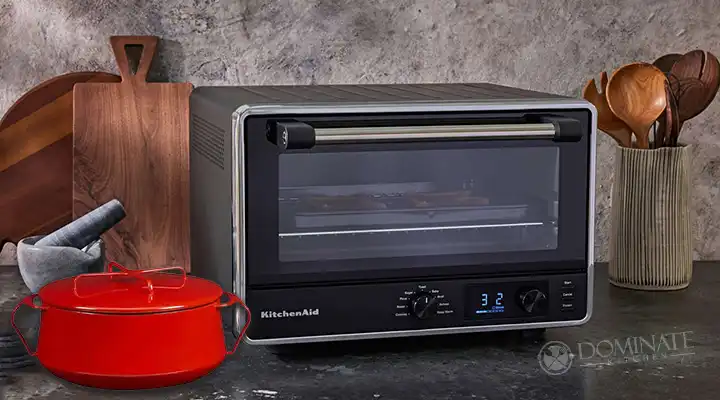

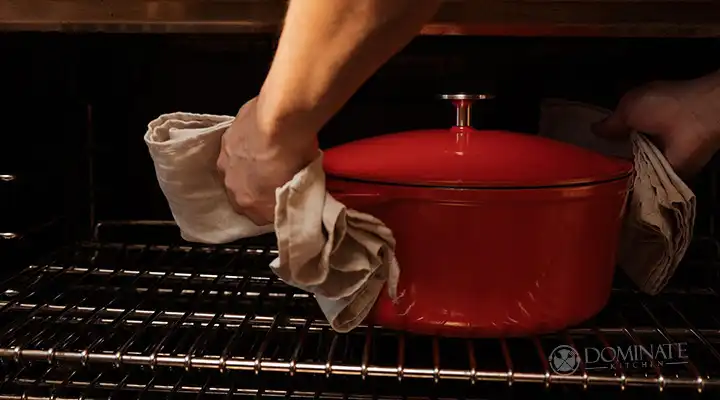
![[EXPLAINED] Why Do the Oven and Cooktop Breakers Have Metal Clip?](https://www.dominatekitchen.com/wp-content/uploads/2023/09/Why-Do-the-Oven-and-Cooktop-Breakers-Have-Metal-Clip.webp)
